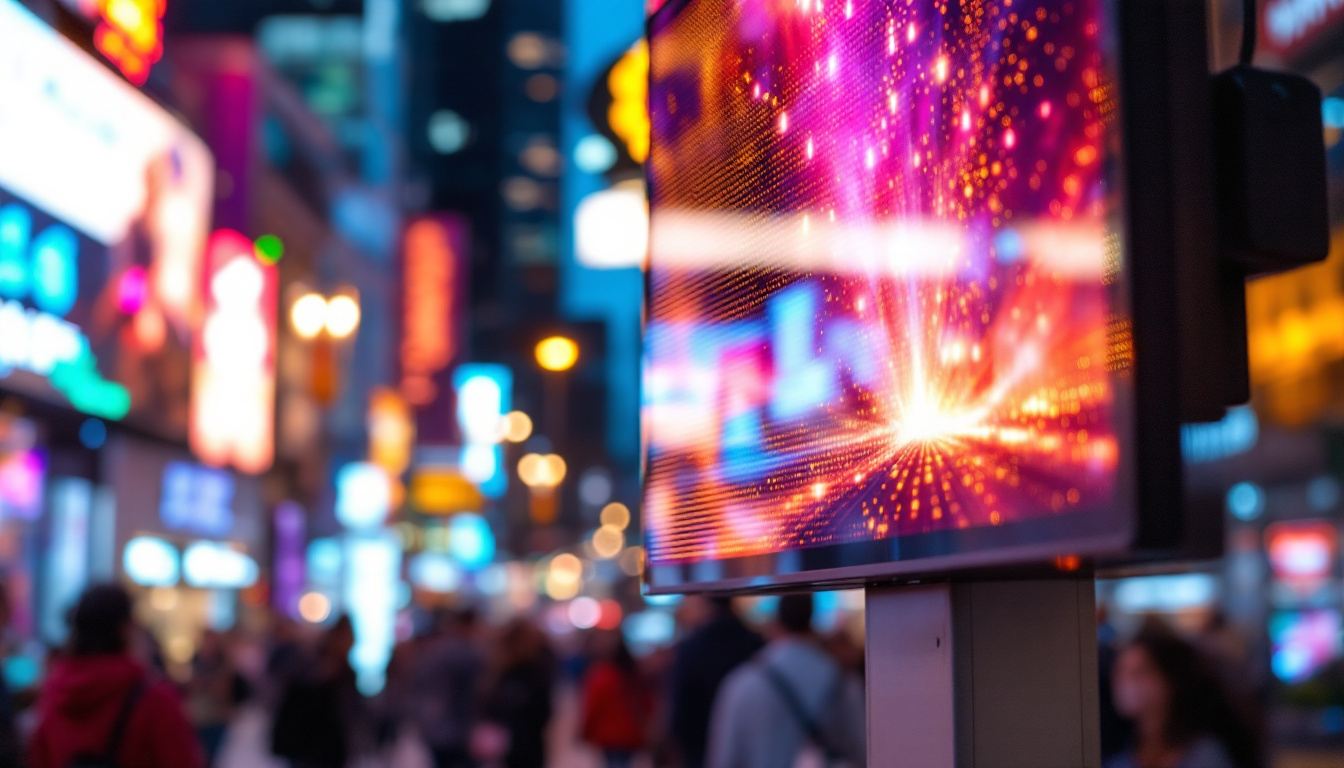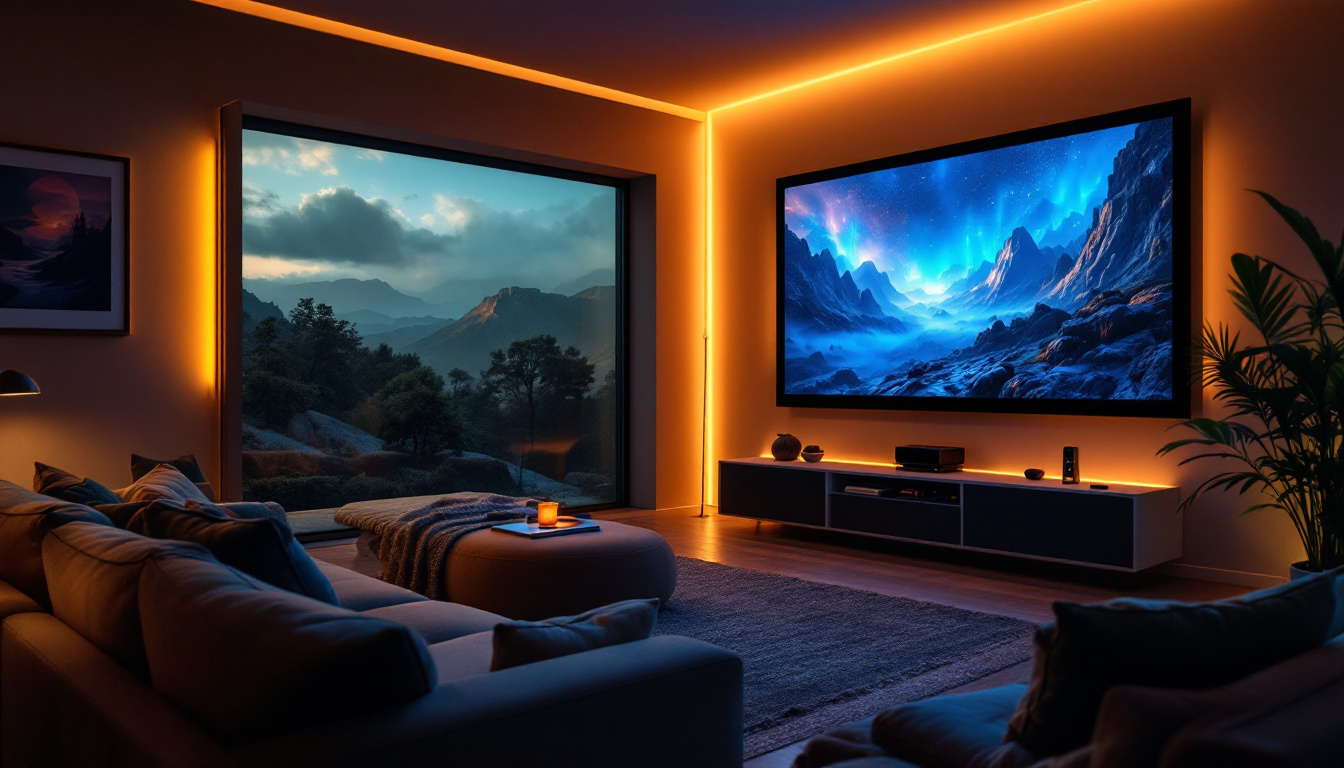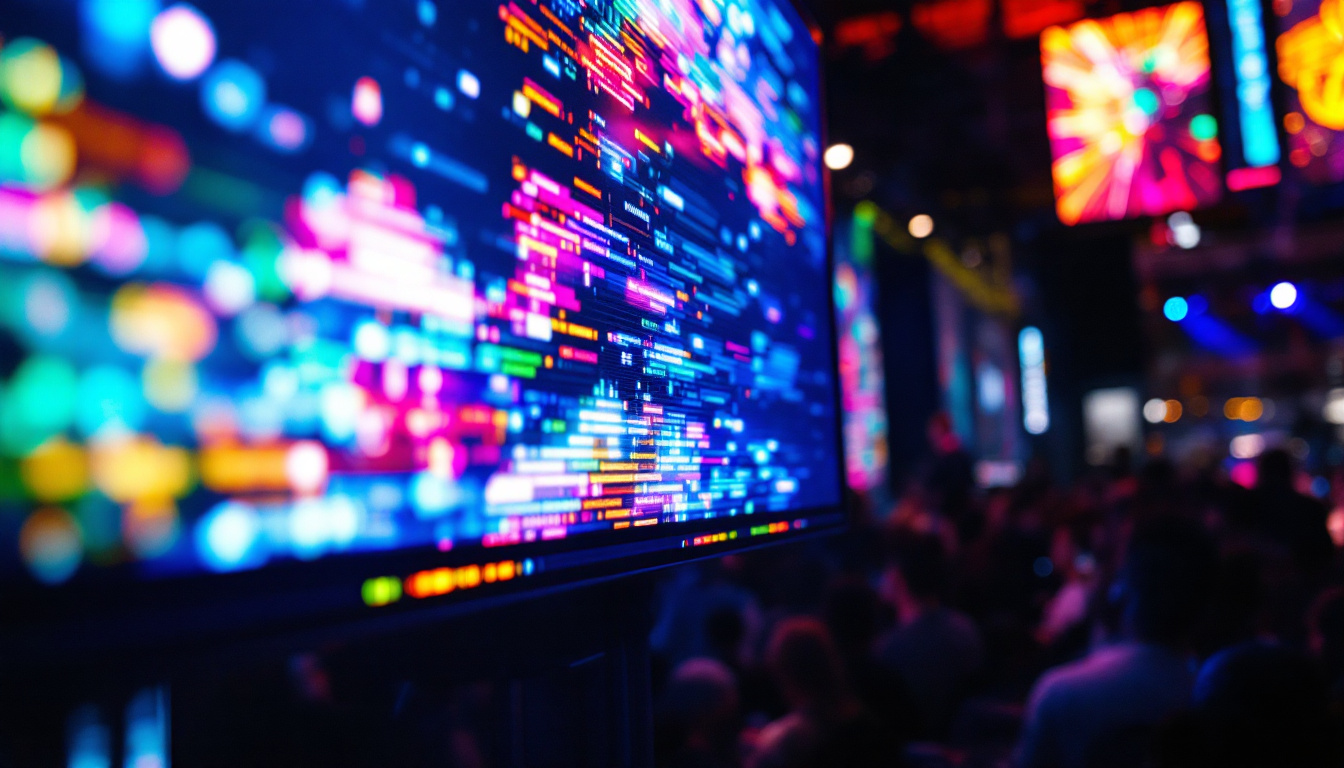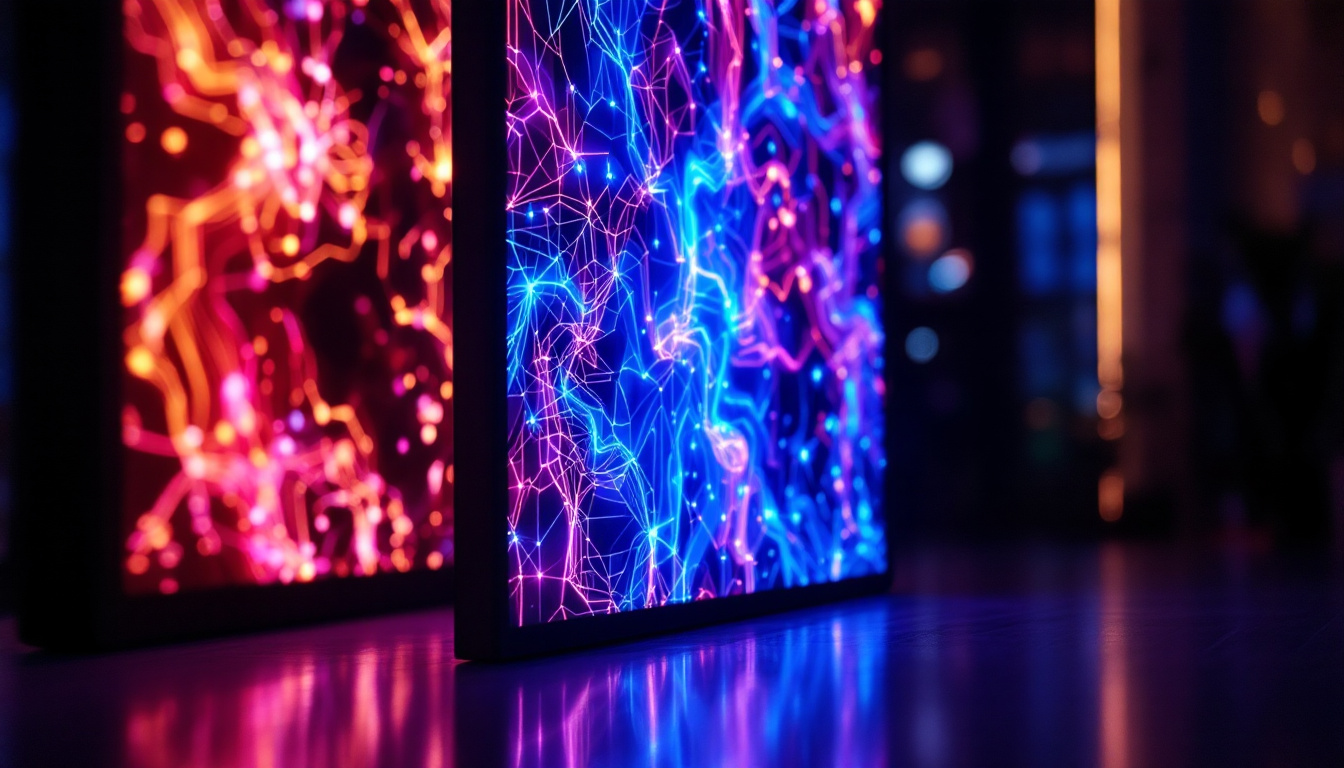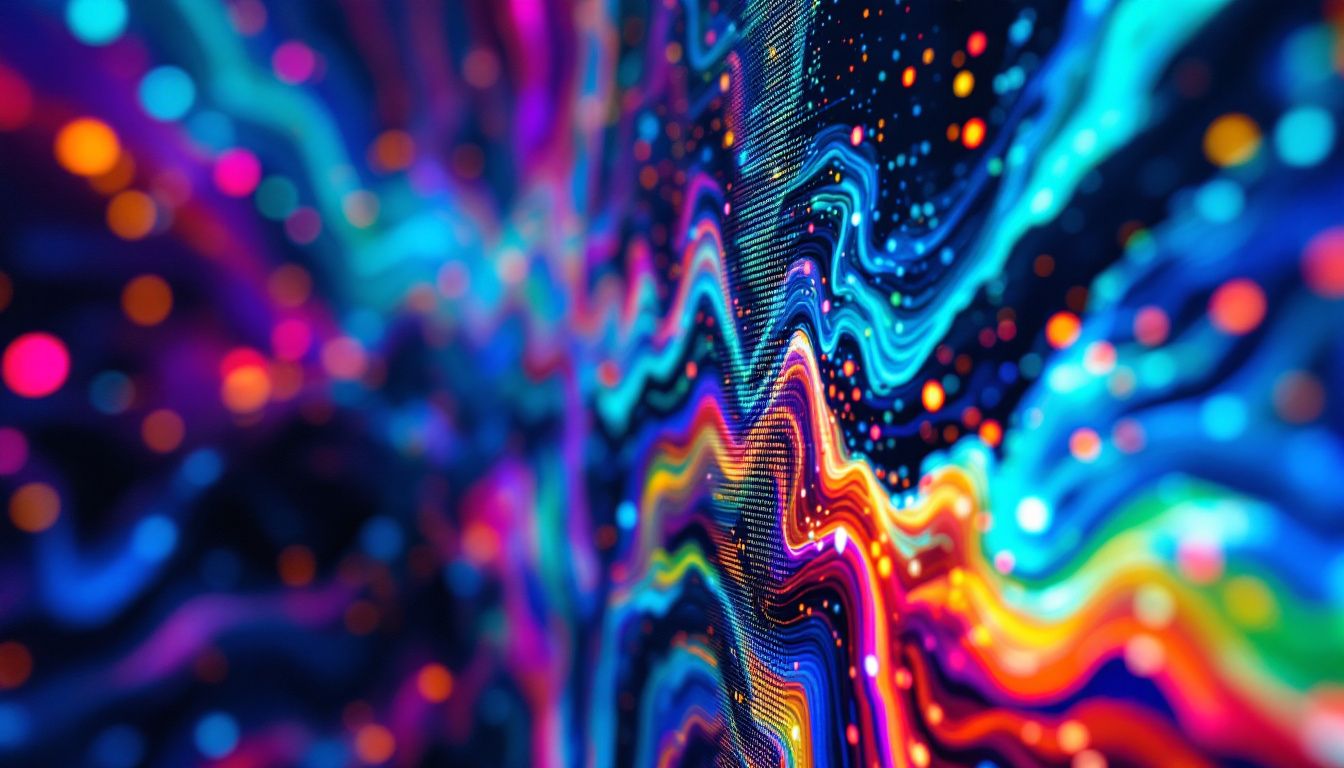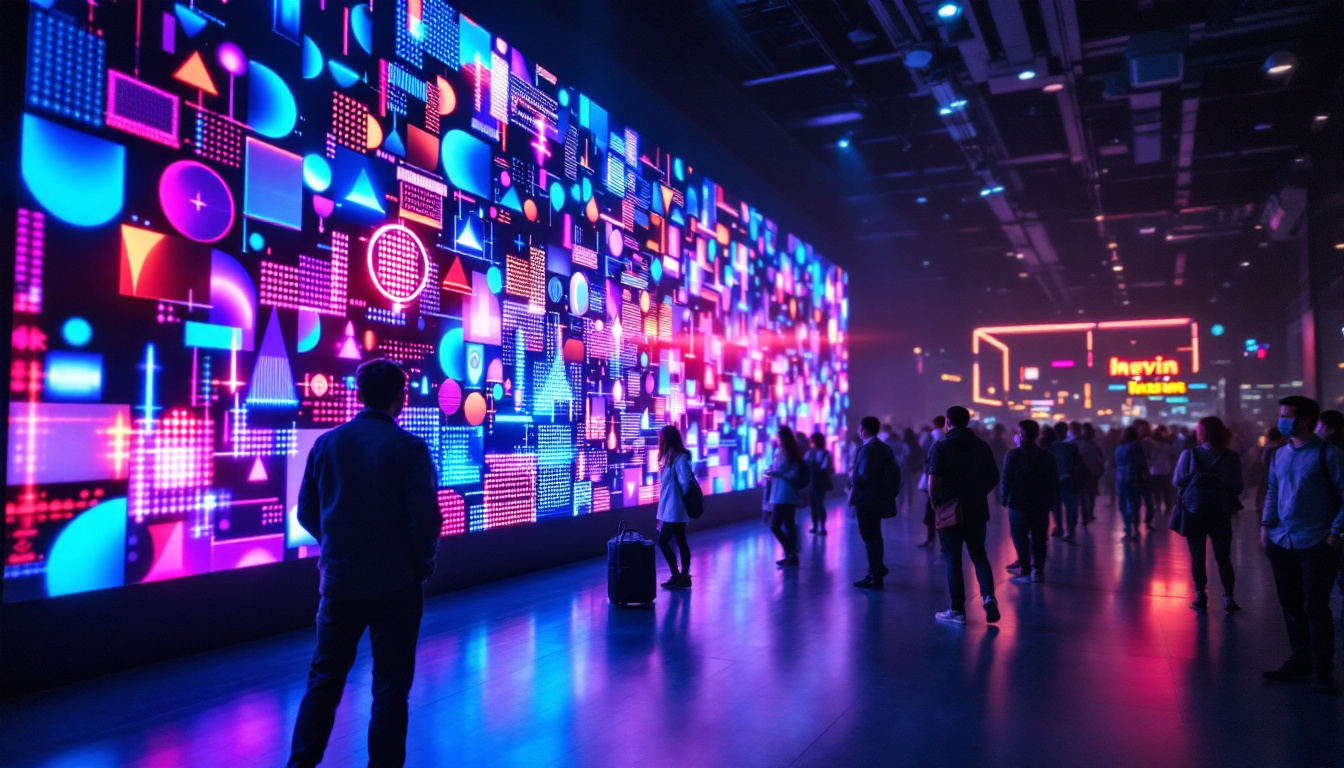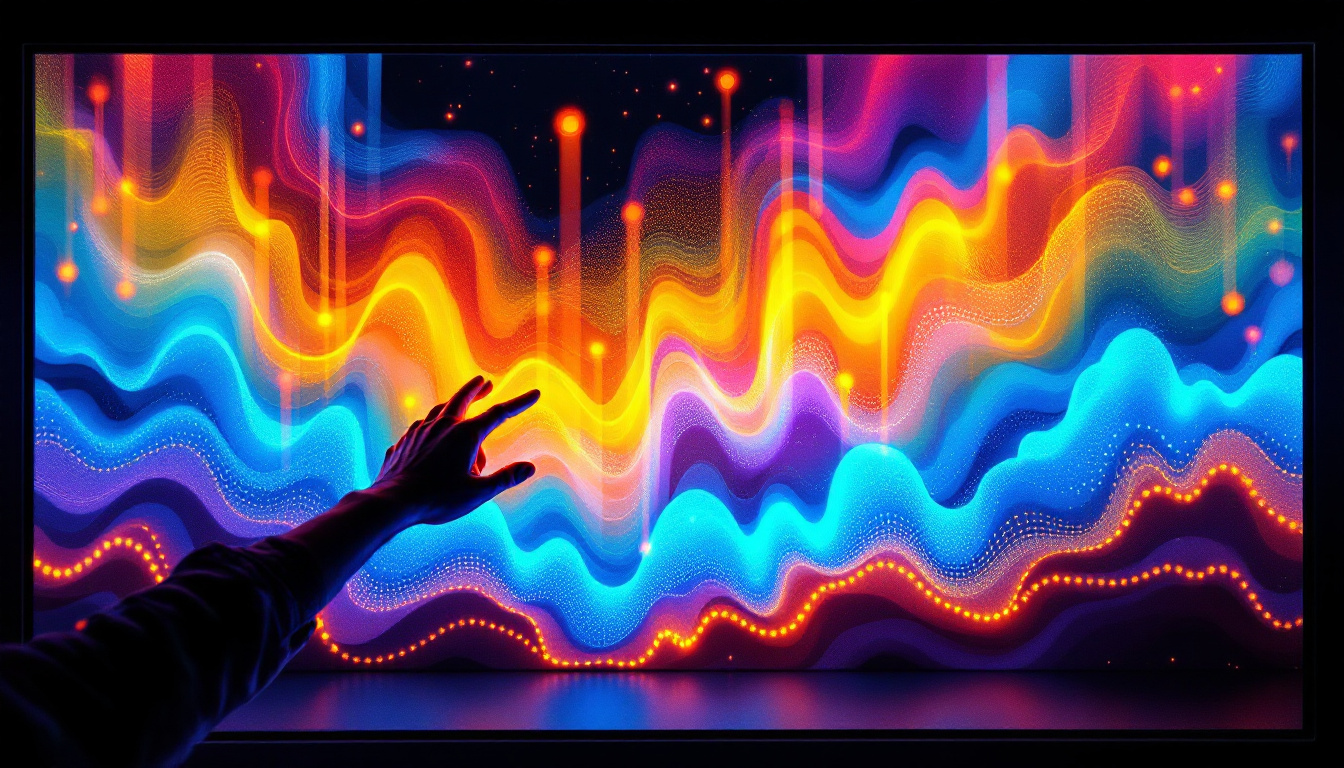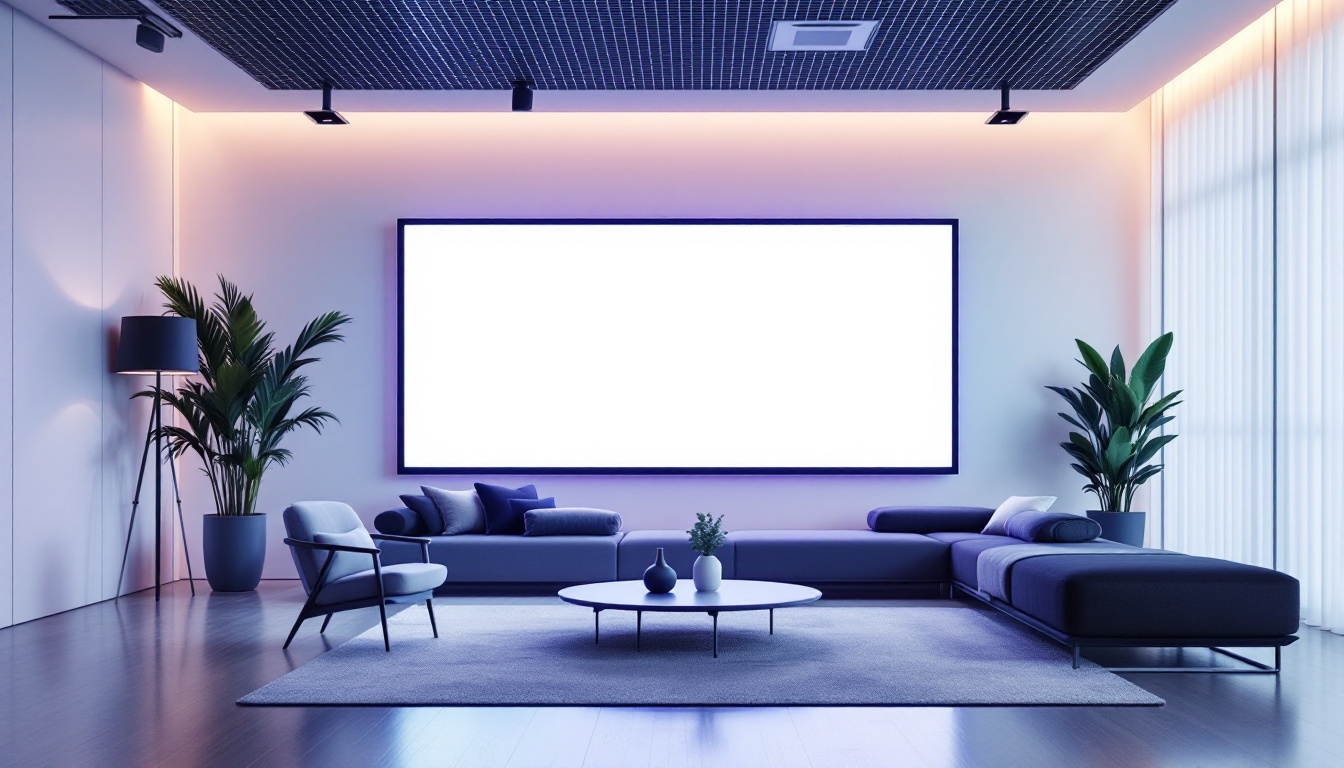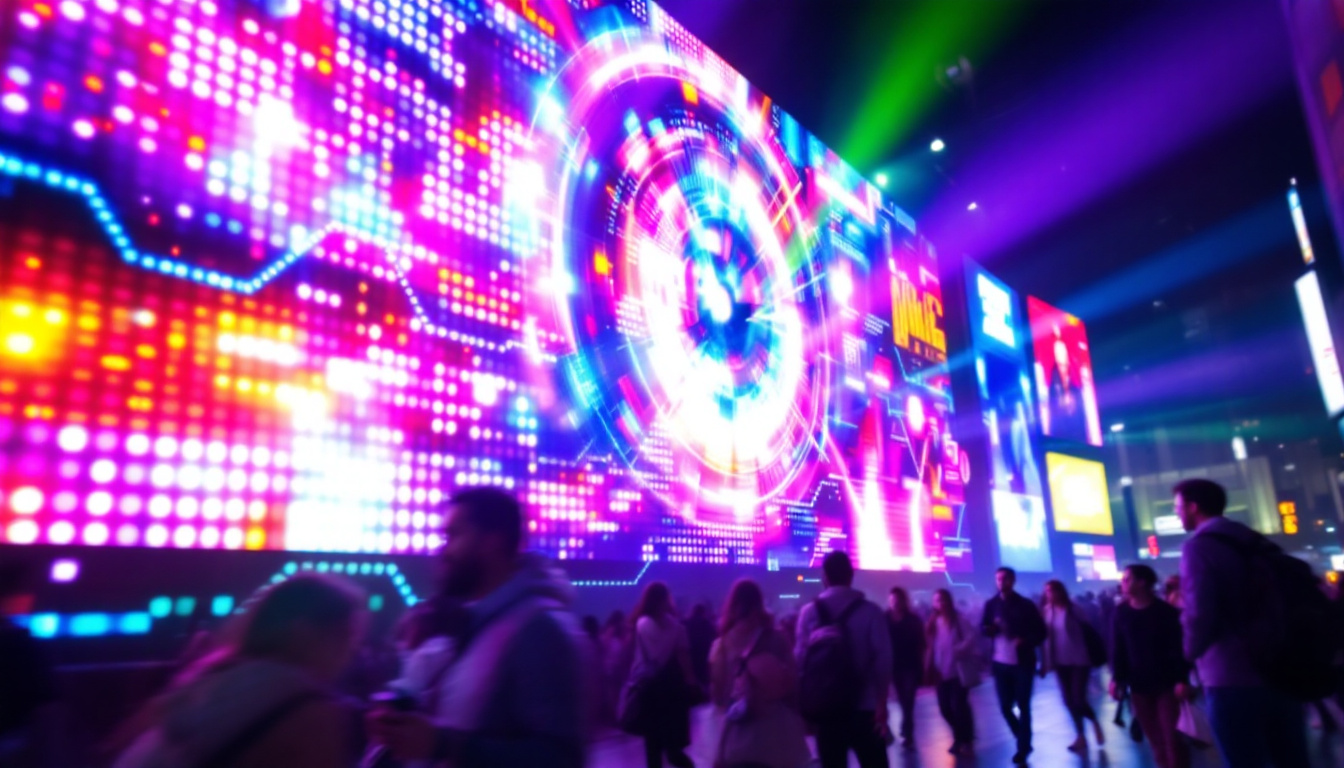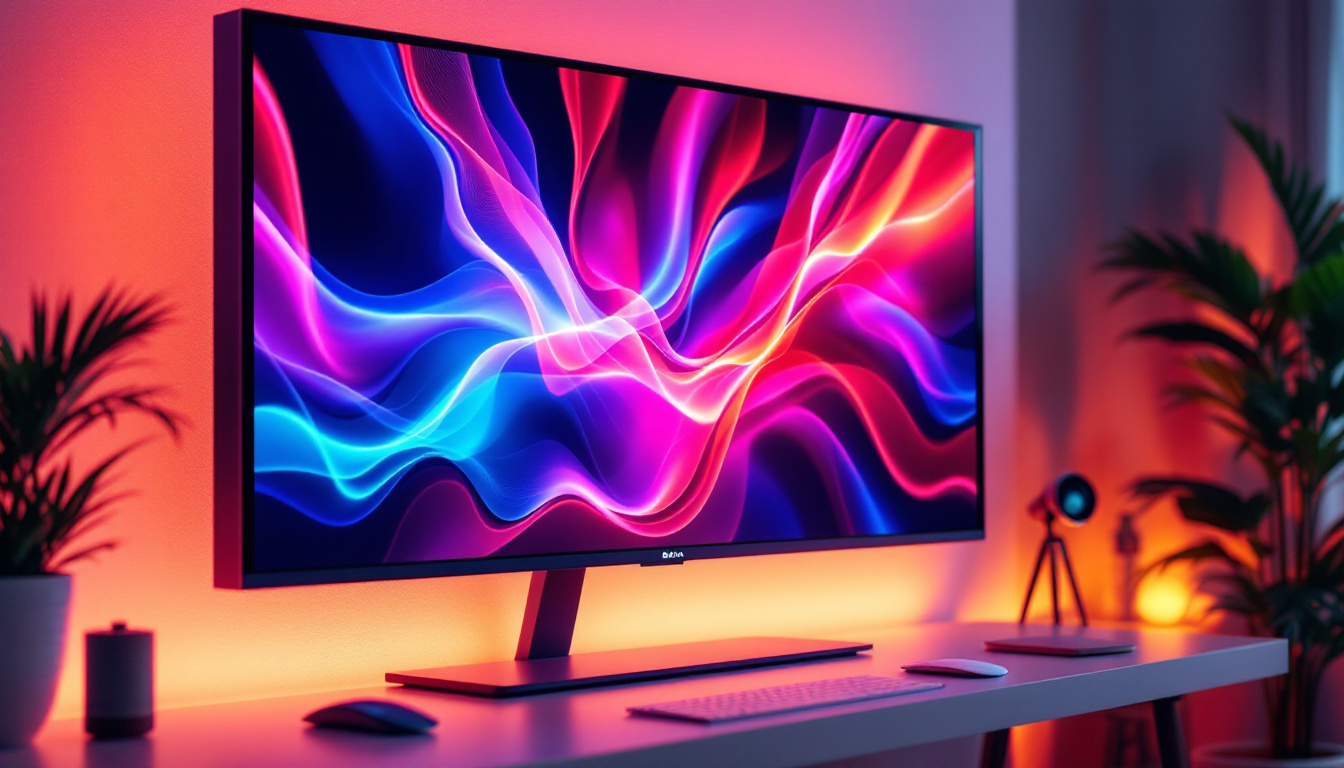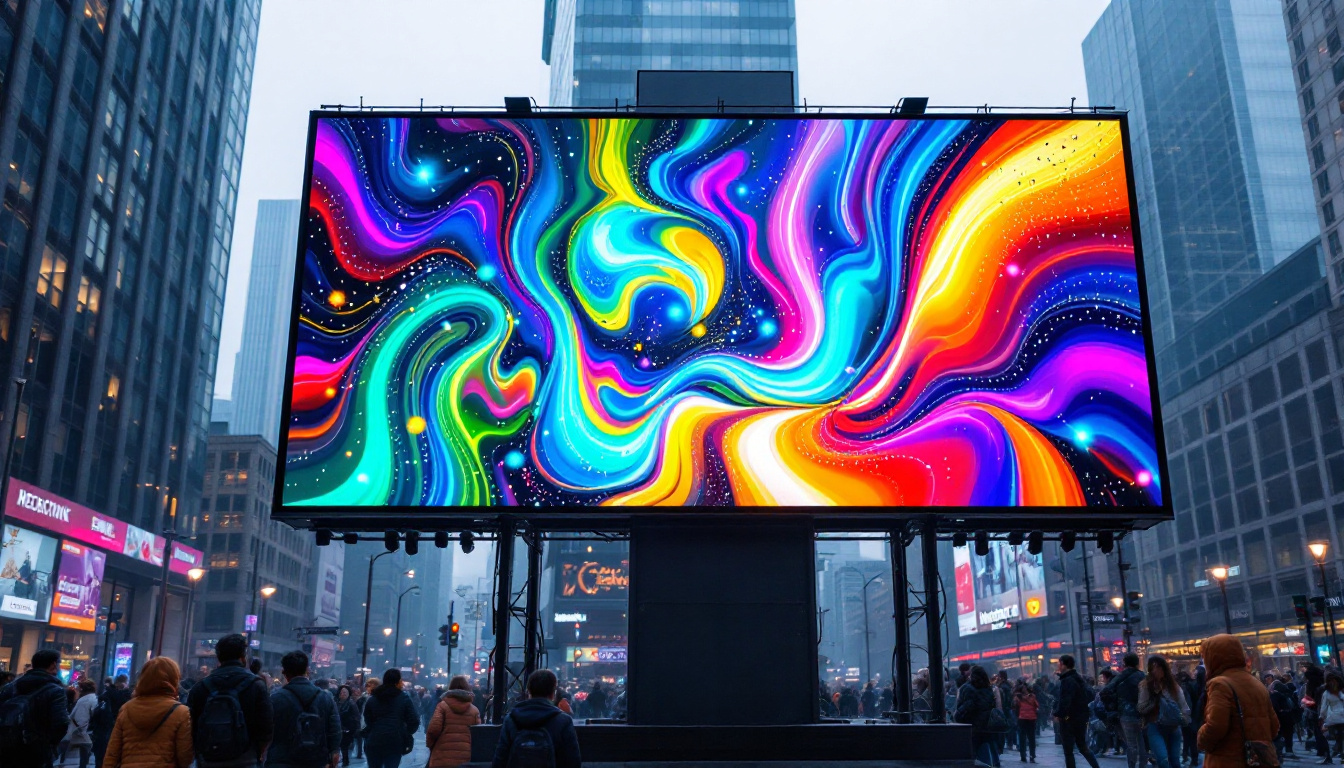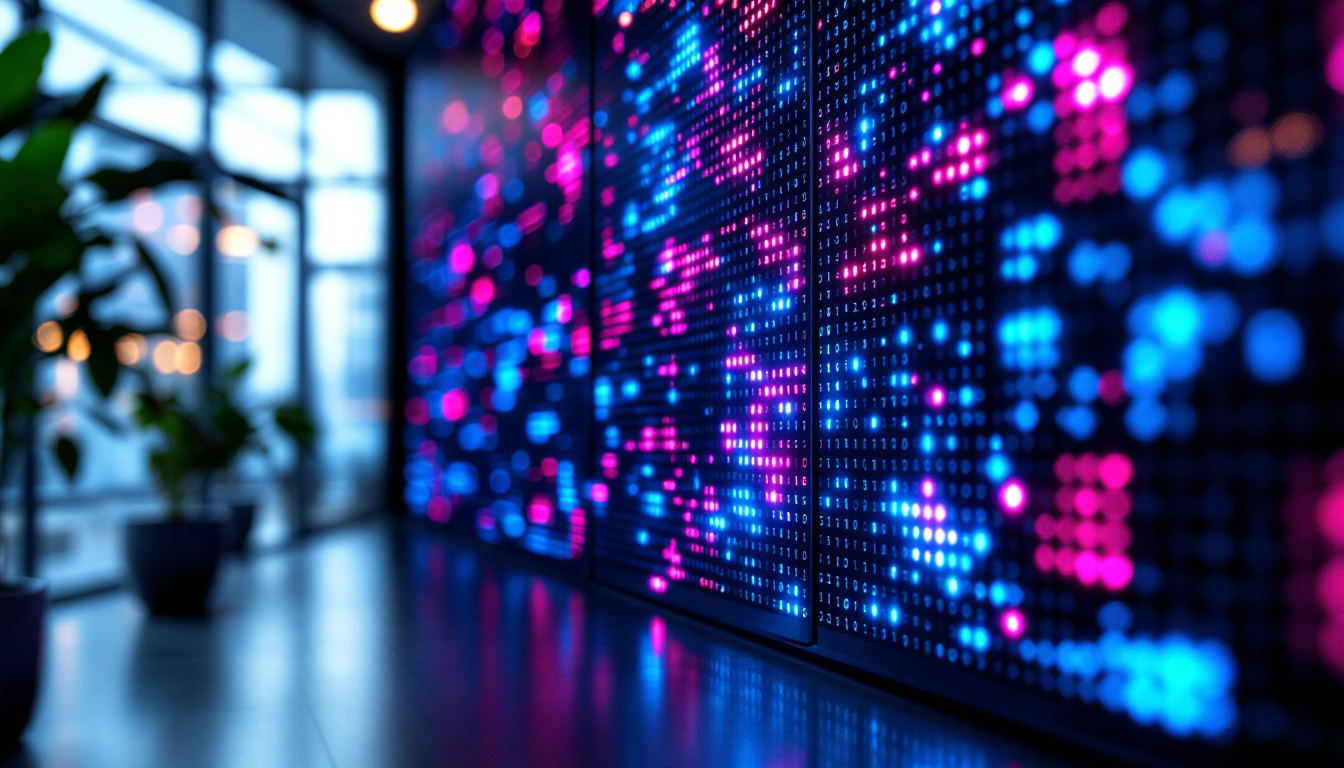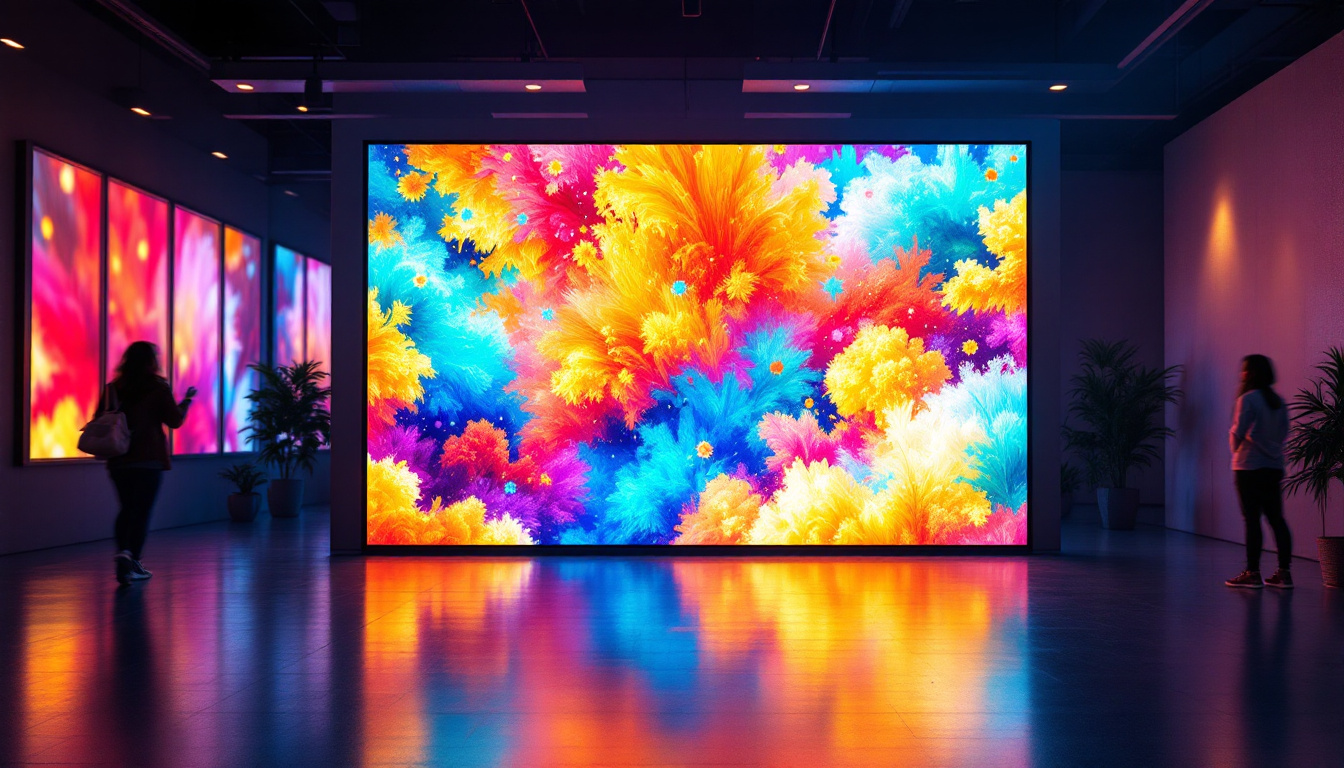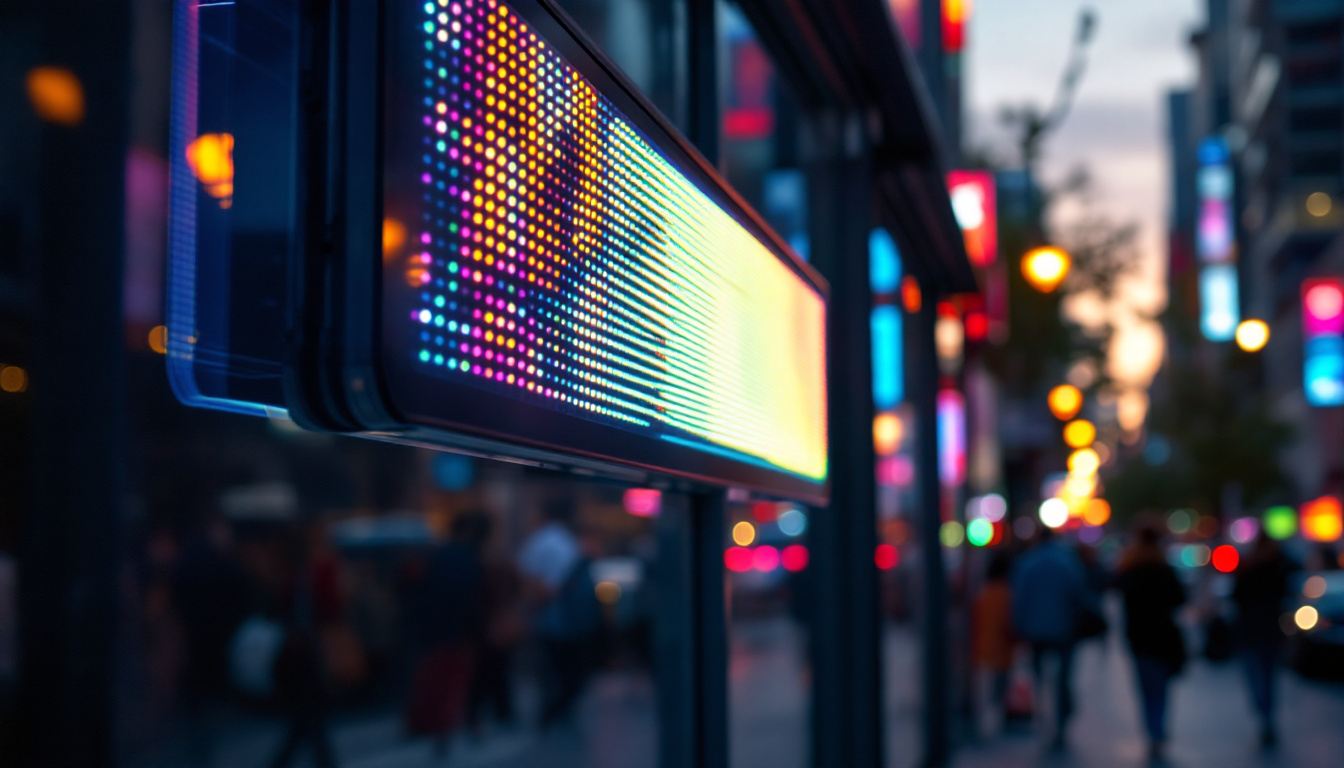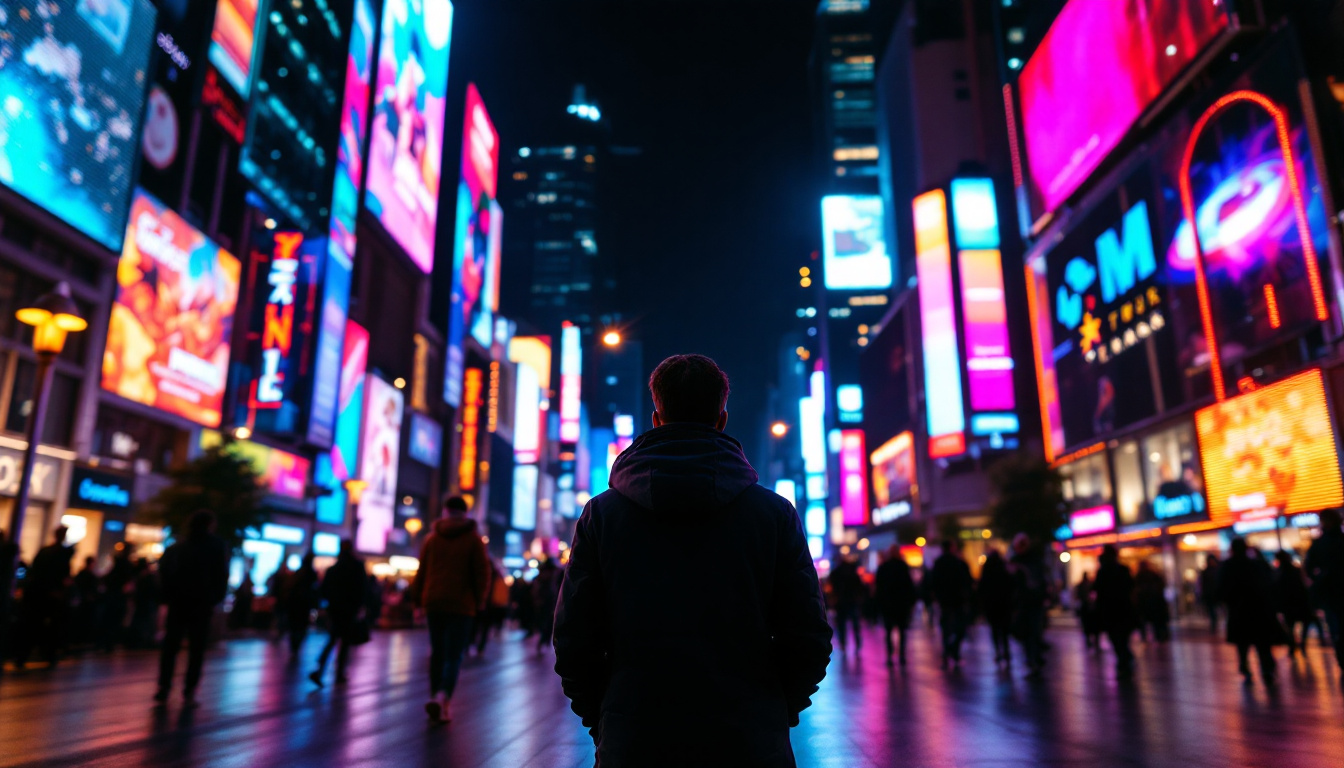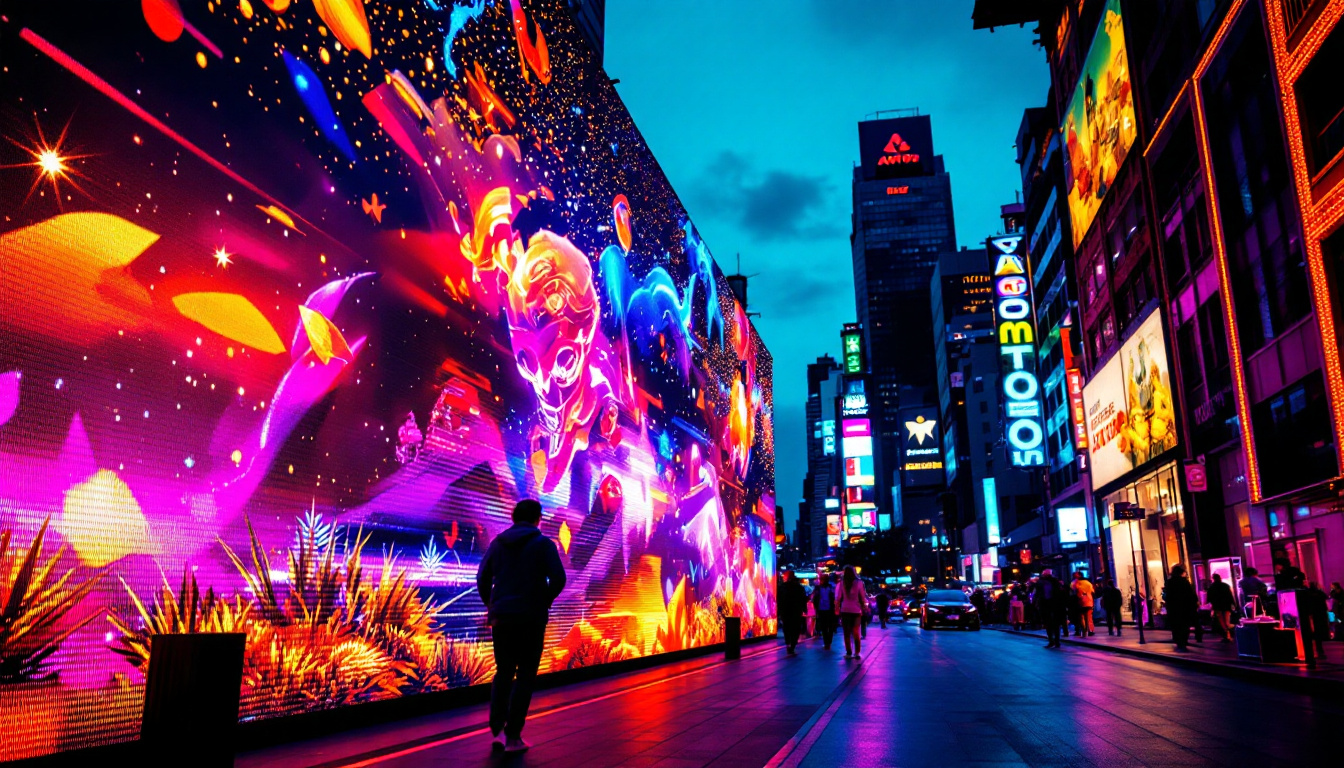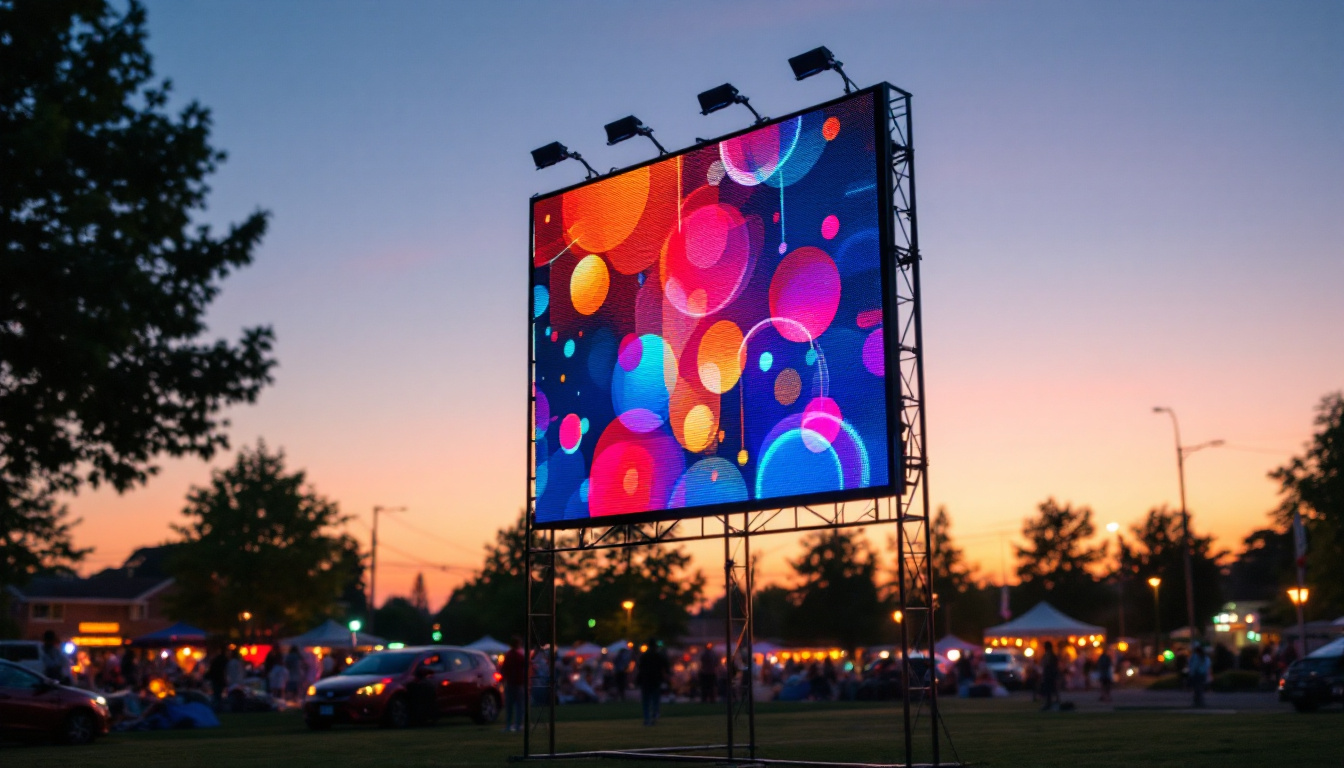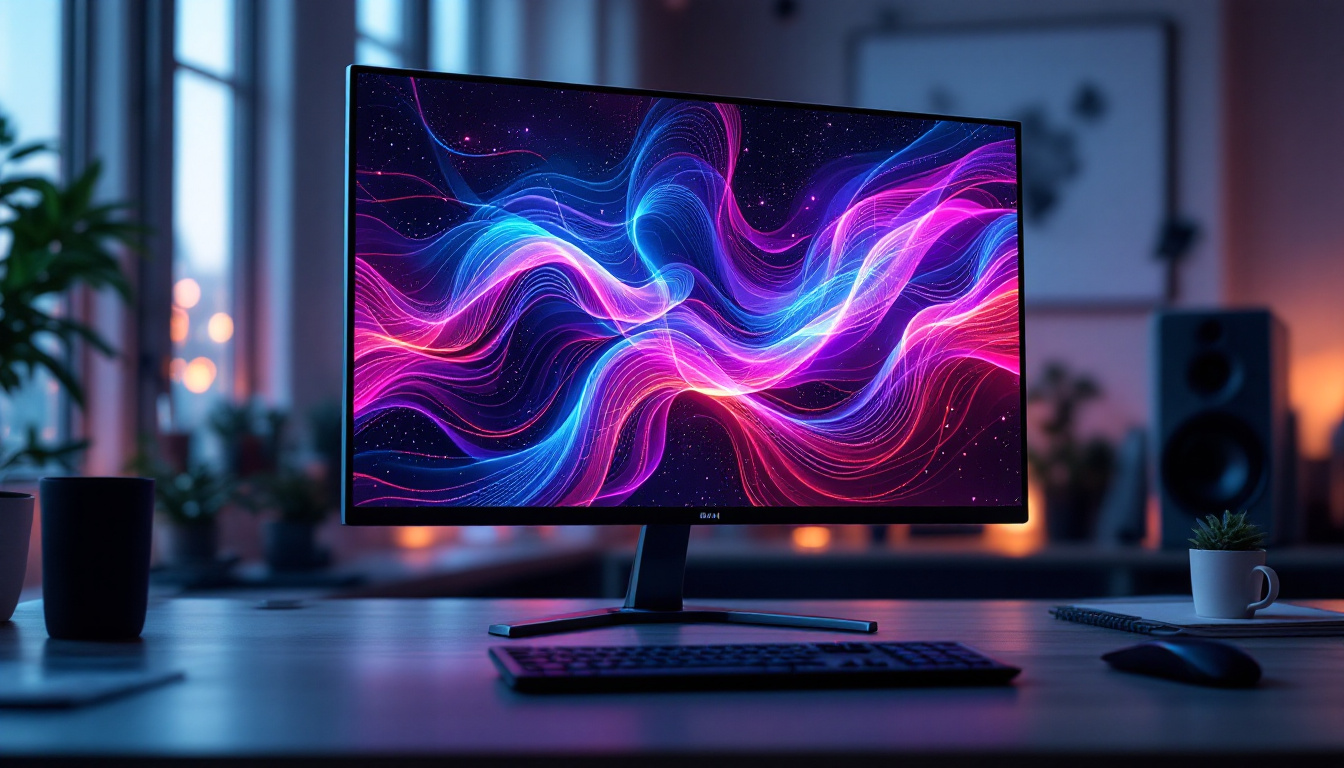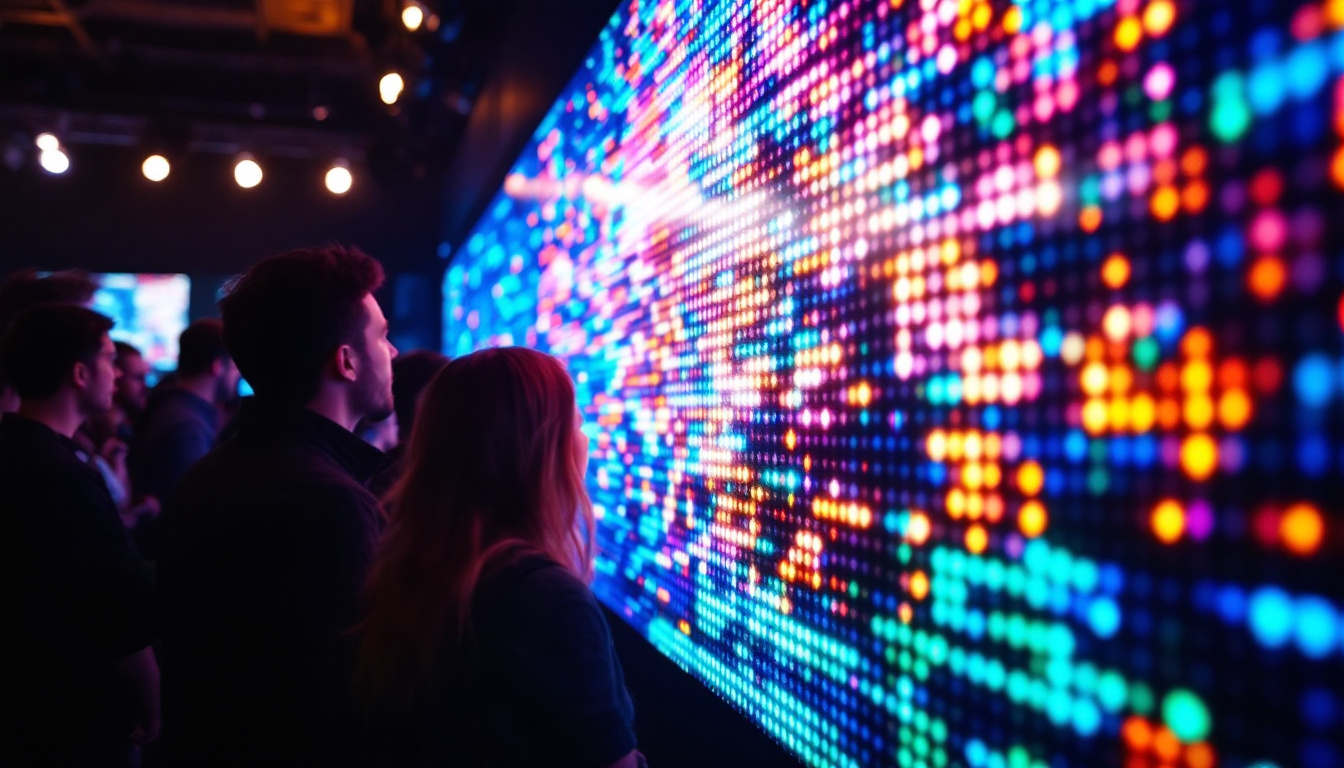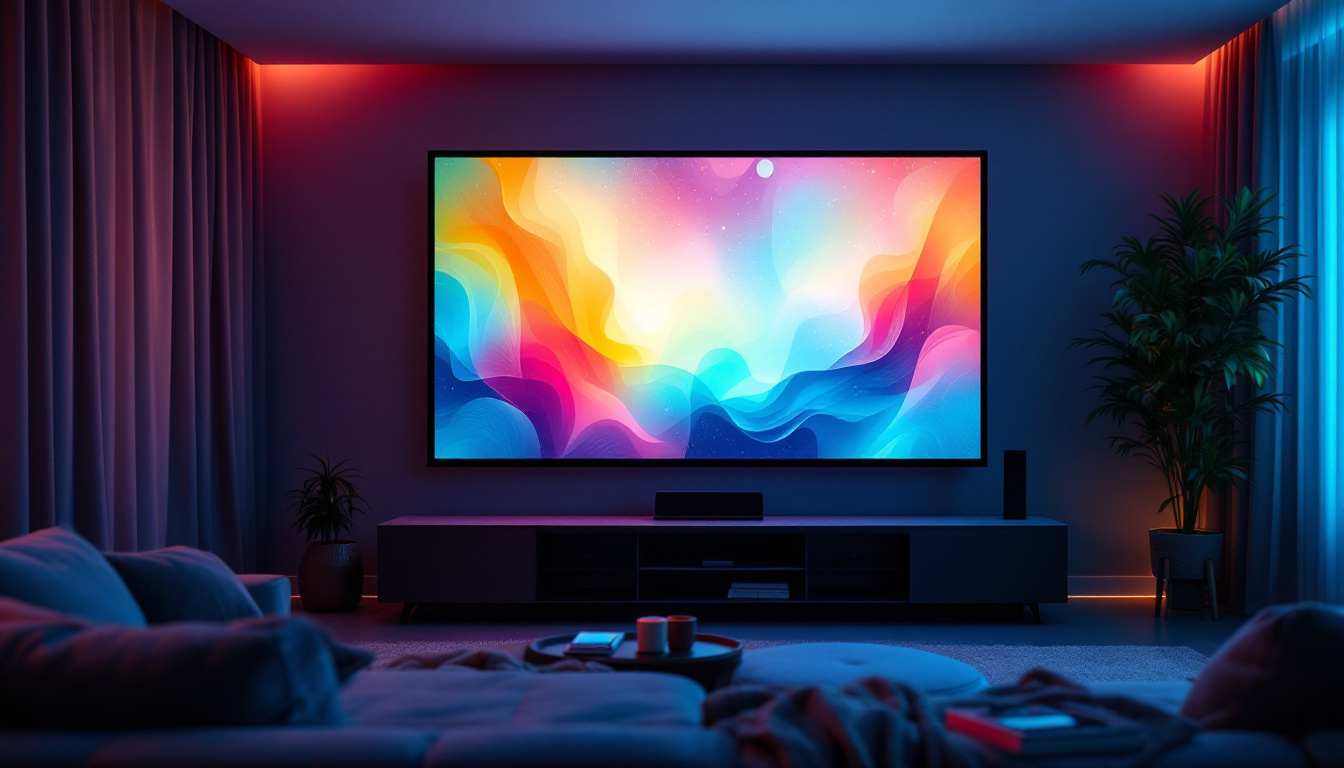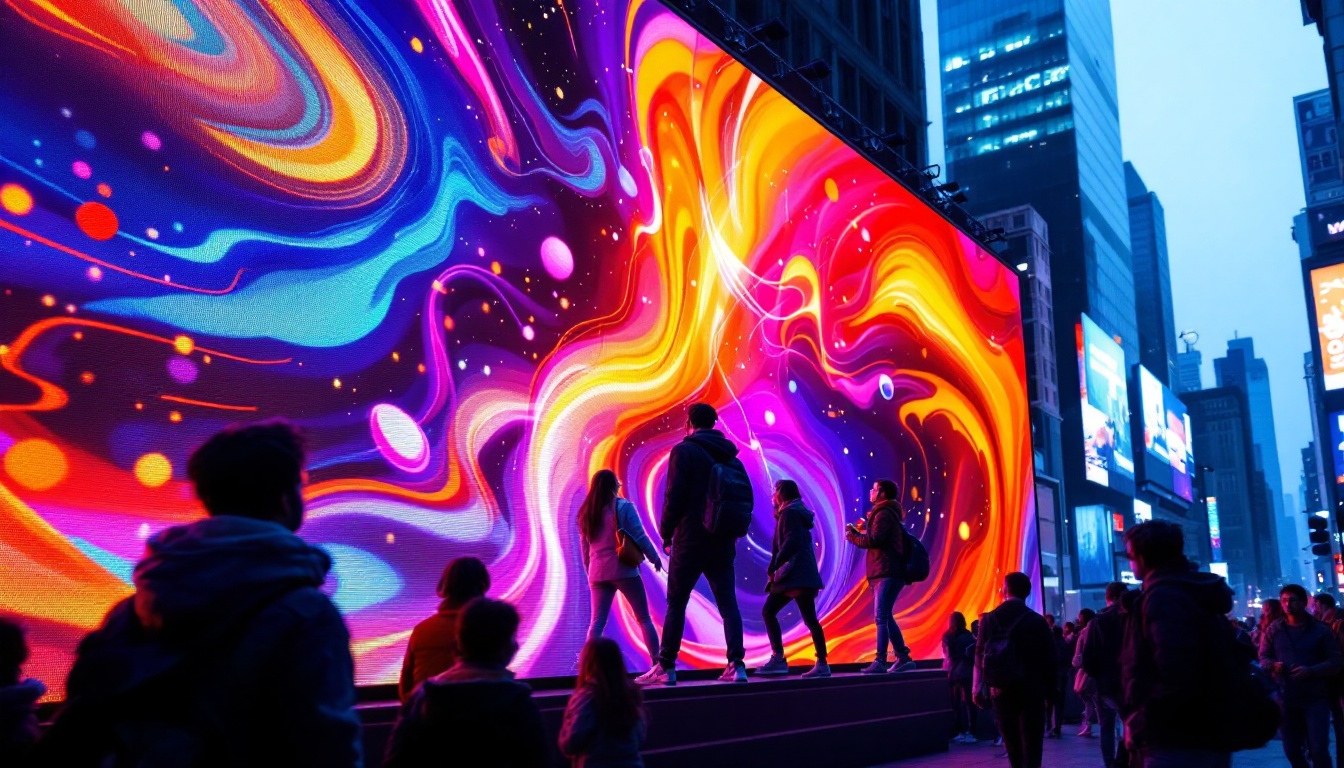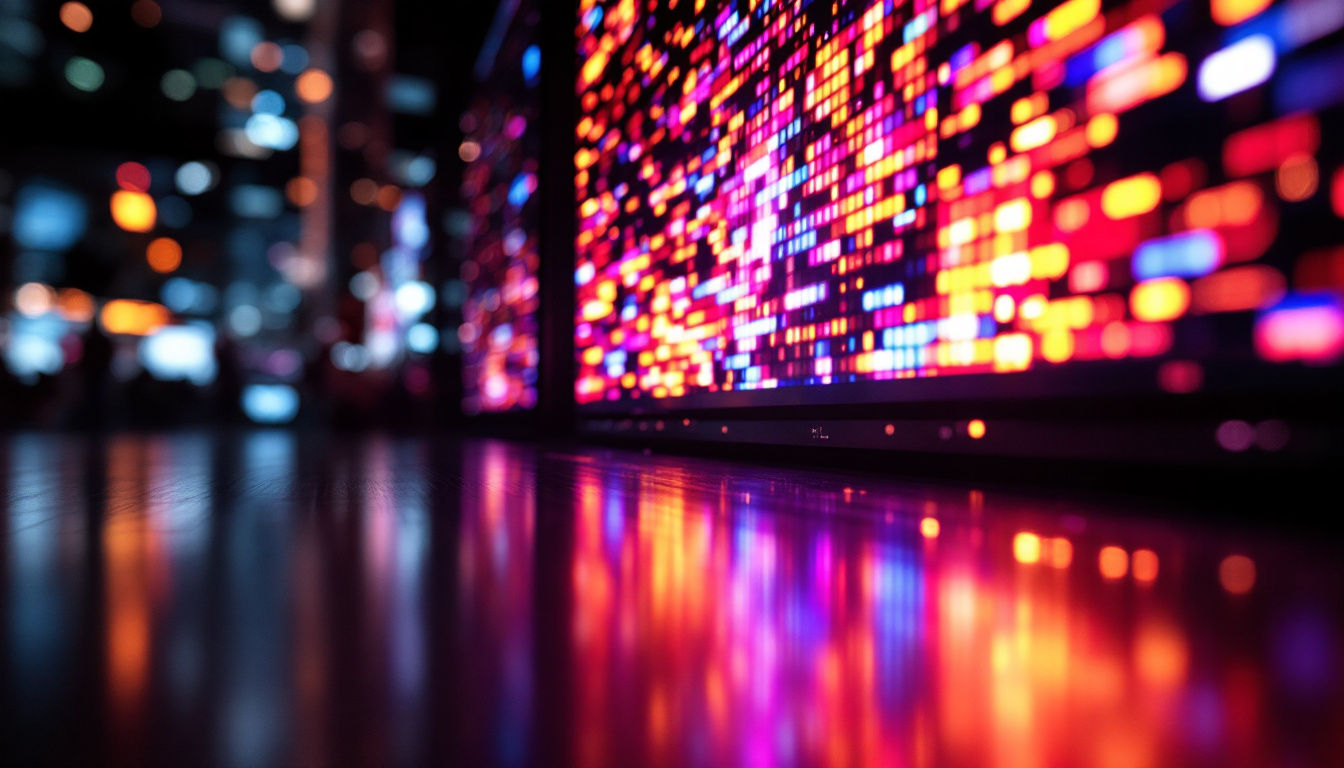In today’s digital age, LED displays have become an integral part of our daily lives. From billboards to televisions, the versatility and efficiency of LED technology have transformed the way information is presented and consumed. This article delves into the intricacies of LED displays, exploring their functionality, advantages, applications, and future trends.
Understanding LED Technology
Light Emitting Diodes (LEDs) are semiconductor devices that emit light when an electric current passes through them. This technology has evolved significantly since its inception, leading to the development of LED displays that are widely used across various sectors. The versatility and efficiency of LEDs have made them a cornerstone in modern lighting solutions, replacing traditional incandescent and fluorescent bulbs in many applications.
How LEDs Work
At the core of an LED is a chip made from a semiconductor material, typically gallium arsenide or gallium phosphide. When electricity is applied, electrons recombine with holes in the semiconductor, releasing energy in the form of photons—this is the light we see. The color of the light emitted depends on the materials used in the semiconductor. For instance, different combinations of elements can produce various wavelengths of light, resulting in colors ranging from deep red to bright blue. This phenomenon is known as electroluminescence, and it is a key feature that distinguishes LEDs from other light sources.
LEDs can be combined in various configurations to create displays of different sizes and resolutions. By adjusting the intensity of each LED, it is possible to create a wide range of colors and images, making them ideal for dynamic content. Additionally, the compact size of LEDs allows for innovative designs, enabling manufacturers to create ultra-thin displays that can be integrated into a variety of devices, from smartphones to large-scale billboards. This adaptability has fueled the rapid growth of LED technology in both consumer electronics and commercial applications.
Types of LED Displays
LED displays come in several types, each suited for specific applications. The most common types include:
- Direct View LED Displays: These are large panels made up of individual LEDs that can be viewed from a distance. They are often used for outdoor advertising and large-scale events, providing vibrant visuals that can be seen in bright sunlight. The modular nature of direct view displays allows for easy repairs and upgrades, making them a popular choice for businesses looking to invest in long-term advertising solutions.
- LED Backlit Displays: Commonly found in televisions and computer monitors, these displays use LEDs to illuminate an LCD panel, providing better contrast and color accuracy. The use of LED backlighting has significantly improved the viewing experience by enhancing brightness and energy efficiency, allowing users to enjoy stunning visuals without a substantial increase in power consumption.
- Organic LED (OLED) Displays: Utilizing organic compounds, these displays offer superior color reproduction and deeper blacks, making them popular in high-end televisions and smartphones. OLED technology allows for individual pixels to emit their own light, eliminating the need for backlighting and resulting in thinner, more flexible screens. This capability has opened up new possibilities in display design, including curved and foldable screens that enhance user interaction.
In addition to these types, advancements in LED technology continue to emerge, such as MicroLED and MiniLED displays. MicroLED technology promises to deliver even higher resolutions and greater energy efficiency by using microscopic LEDs that can be arranged in a variety of configurations. MiniLED, on the other hand, utilizes smaller LEDs for backlighting, allowing for more precise control over brightness and contrast, which is particularly beneficial for HDR (High Dynamic Range) content. As these technologies develop, they are set to redefine the standards for visual displays across all industries.
Advantages of LED Displays
LED displays offer numerous benefits that make them a preferred choice for various applications. Their efficiency, longevity, and versatility are just a few reasons why they have gained popularity.
Energy Efficiency
One of the most significant advantages of LED technology is its energy efficiency. Compared to traditional incandescent bulbs and even fluorescent lights, LEDs consume significantly less power while providing the same or greater brightness. This not only reduces electricity costs but also minimizes the environmental impact.
In commercial settings, the energy savings can be substantial, leading to a quicker return on investment. Many businesses are now opting for LED displays as part of their sustainability initiatives, further enhancing their appeal. Furthermore, the ability to dim LED displays without loss of quality allows for even greater energy savings, making them an ideal choice for dynamic environments where lighting needs may change throughout the day.
Longevity and Durability
LED displays are known for their long lifespan, often lasting up to 100,000 hours or more. This durability is due to the solid-state nature of LEDs, which makes them more resistant to shock and vibration compared to traditional displays.
Moreover, the low heat generation of LEDs contributes to their longevity. Unlike other lighting technologies that can degrade over time due to heat, LEDs maintain their performance, reducing the need for frequent replacements and maintenance. This reliability is particularly beneficial in high-traffic areas or for applications where downtime can lead to significant losses, such as in transportation hubs or large-scale events.
High Brightness and Contrast
LED displays are capable of producing high levels of brightness, making them suitable for both indoor and outdoor environments. This brightness ensures that content remains visible even in direct sunlight, which is essential for outdoor advertising and public displays.
Additionally, the contrast ratio of LED displays is superior to many other technologies. This means that images and videos appear more vibrant and lifelike, enhancing the overall viewing experience. The ability to display a wider color gamut further enriches the visual output, allowing for more detailed and engaging presentations. This feature is particularly advantageous in creative industries, such as film and advertising, where visual impact is paramount to capturing audience attention and conveying messages effectively.
Applications of LED Displays
The versatility of LED displays has led to their adoption across various industries. From advertising to entertainment, their applications are vast and varied.
Advertising and Marketing
One of the most prominent uses of LED displays is in advertising. Digital billboards, storefront displays, and event screens utilize LED technology to capture the attention of passersby. The ability to change content quickly and easily allows businesses to promote sales, events, and new products in real-time.
Moreover, the dynamic nature of LED displays enables creative advertising strategies, such as animations and interactive content, which can significantly enhance customer engagement.
Entertainment and Events
In the entertainment industry, LED displays play a crucial role in concerts, festivals, and sporting events. Large LED screens are often used to broadcast live performances, ensuring that all attendees have a clear view of the action.
Additionally, LED technology is employed in stage designs, allowing for stunning visual effects that enhance the overall experience for audiences. The flexibility of LED panels enables them to be shaped and configured in various ways, providing endless creative possibilities.
Transportation and Public Information
LED displays are widely used in transportation systems, providing real-time information to passengers. From train stations to airports, LED screens display arrival and departure times, flight information, and other essential updates.
Furthermore, LED displays are utilized in traffic management systems, displaying important messages such as speed limits, warnings, and directions to improve road safety and efficiency.
Future Trends in LED Display Technology
The future of LED display technology is promising, with ongoing advancements that continue to push the boundaries of what is possible. As technology evolves, several trends are emerging that will shape the industry.
MicroLED Technology
MicroLED is a cutting-edge technology that involves the use of microscopic LEDs to create displays. This technology offers several advantages, including improved brightness, contrast, and energy efficiency. MicroLED displays are also self-emissive, meaning they do not require a backlight, resulting in thinner and lighter screens.
As MicroLED technology matures, it is expected to revolutionize the display industry, providing consumers with high-quality visuals in a compact form factor.
Flexible and Curved Displays
Flexible LED displays are gaining traction, allowing for innovative designs that can fit various environments. These displays can be bent or curved to create unique shapes, making them ideal for creative installations in retail spaces, museums, and art exhibitions.
As manufacturing processes improve, the cost of flexible displays is expected to decrease, making them more accessible for a wider range of applications.
Integration with Smart Technology
As smart technology becomes increasingly prevalent, LED displays are also evolving to integrate with IoT (Internet of Things) systems. This integration allows for enhanced interactivity and personalization, enabling users to control displays through mobile devices or voice commands.
Furthermore, smart LED displays can collect data on viewer engagement and preferences, allowing businesses to tailor their content more effectively and improve overall customer experiences.
Conclusion
LED displays have transformed the way information is presented and consumed across various sectors. Their energy efficiency, longevity, and versatility make them an attractive option for businesses and consumers alike. As technology continues to advance, the future of LED displays promises even more exciting developments, paving the way for innovative applications that enhance communication and engagement.
In summary, LED displays are not just a trend; they represent a fundamental shift in how visual information is conveyed. With their ability to adapt to different environments and applications, they will undoubtedly play a crucial role in shaping the future of digital communication.
Explore Cutting-Edge LED Displays with LumenMatrix
Ready to elevate your visual experience with the latest in LED display technology? Look no further than LumenMatrix, a pioneer in crafting immersive LED display modules tailored to your needs. Whether you’re seeking to enhance your brand’s visibility with an Indoor LED Wall Display, captivate passersby with an Outdoor LED Wall Display, or innovate with Custom LED Display solutions, LumenMatrix has you covered. Our mission is to revolutionize your visual communication, ensuring your message resonates with clarity and impact. Check out LumenMatrix LED Display Solutions today and transform the way you engage with your audience.

